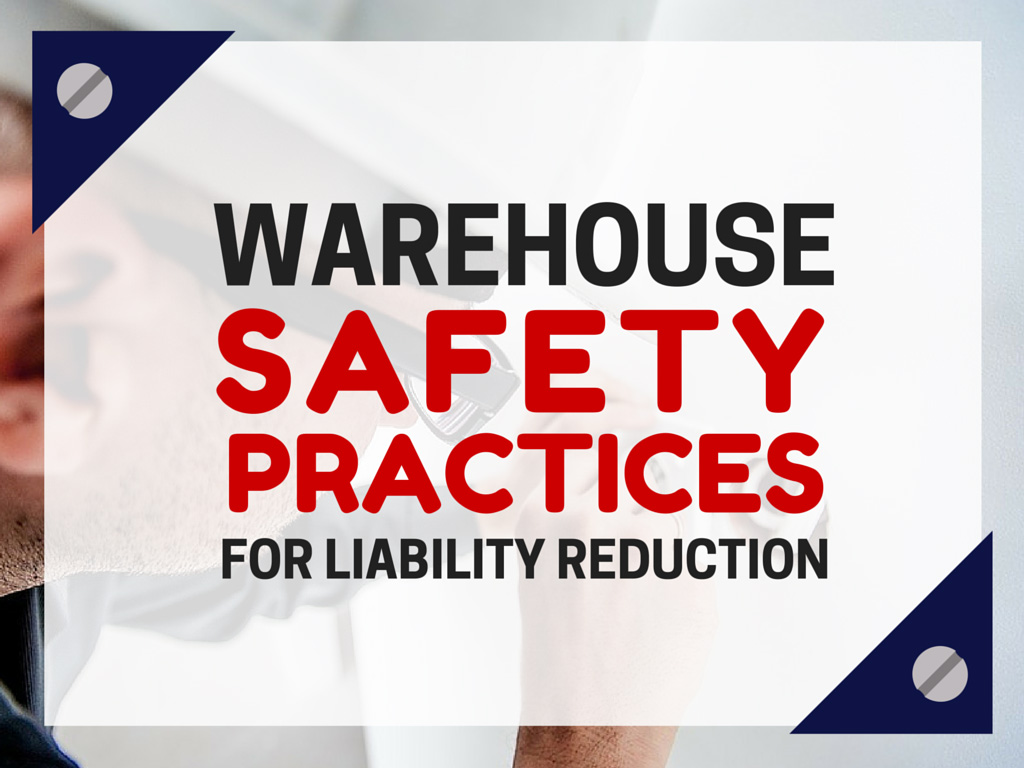American Made, Iron Clad Protected - Discover the Industries Best Warranty.

Blog
Warehouse Safety Practices for Liability Reduction

 Many types of warehouses present multiple hazards during operation, including the risk of electrical, slip-and-fall, and vehicular damage. To eliminate these risks and meet U.S. Occupational Safety and Health Administration (OSHA) safety standards here are some ways to avoid employee injury and equipment damage in your facility, including the use of industrial warehouse safety curtains.
Many types of warehouses present multiple hazards during operation, including the risk of electrical, slip-and-fall, and vehicular damage. To eliminate these risks and meet U.S. Occupational Safety and Health Administration (OSHA) safety standards here are some ways to avoid employee injury and equipment damage in your facility, including the use of industrial warehouse safety curtains.
These warehouse safety practices can make sure that employees’ well, being is preserved while allowing you to save money.
Prevent Employee Injury with Warehouse Ergonomics
Employees are often at risk of slipping and falling on the job, along with musculoskeletal injuries that can occur during heavy lifting. Warehouse managers can avoid these risks with a system of impact-absorbing industrial floor mats, heavy-duty equipment intended for lifting large loads, and using appropriate lighting that’s easy on the eyes.
Storage should allow employees to place loads on racks or shelves without requiring movement that could cause strain, and floors should remain free of spills and other tripping hazards. That means centering the mass of items stored towards the middle shelves.
Heavy items should not have to be lifted very high, and only the lightest items should be lifted over the head. For larger shelving systems, it’s important to give employees access to ladders and other means of reaching loads.
Heavy loads are not the only hazard to employee health. Small loads can cause injuries if they are repeatedly lifted throughout the day with improper technique. Repetitive tasks are at a greater risk of strain for employees because the damage is cumulative and the problem isn’t spotted until an injury occurs.
One of the most commonly overlooked tripping hazards is electrical cords. Cords should be placed so that they do not interfere with high traffic areas. If they must cross a walking path, it is suggested that a mat be placed over them to prevent the hazard. It is easy to overlook how little is needed for someone to fall.
Monitor Conveyors to Avoid Accidents
Warehouse management should regularly inspect conveyors to make sure they’re safe and free of damage. Pinch points should remain well guarded, and lighting should give employees a clear view of each part of the conveyor system. Lockout plans should also be implemented to shut down equipment when breakdowns or temporary
malfunctions occur automatically.
Employees should have as little access to moving parts as possible. They should be properly trained and made aware of any hazards they will be working in proximity to.
Create Safe Storage Areas
All stacked loads should be even and straight to avoid toppling and causing injury. Heavier loads should remain on middle or lower-level shelves to avoid top-heavy shelving. Aisles and other areas around storage shelves should also stay unobstructed at all times.
Shelving should be properly mounted to the floor and walls. Anything that has the possibility to move should be tied down.
When removing products or equipment from shelves, employees can further avoid injury and damage by removing them one at a time.
Pride should not be the cause of a workplace injury. If the item is sufficiently heavy, multiple people should lift it together. If it can’t safely be lifted by a couple of employees, it needs to be done with the proper machinery.
Make Sure Loading Docks Are Safe
Certain steps to make loading docks safe include using appropriate signs and colored tape along edges to indicate drop-off areas, preventing forklifts from driving too close to edges, installing stairs and ladders that meet OSHA requirements, and securing the dock plates that can handle the weight of loads you intend to place on them.
Employees need to know where heavy equipment will be unloading and where to stand safely. Whenever possible, the blind spots of machinery should be monitored by bystanders. All employees need to be versed in common hand signals to be able to convey concerns to the operators.
Use Industrial Warehouse Safety Curtains
Another way to keep employees safe and meet OSHA requirements is to install one or more industrial warehouse safety curtains where necessary. Industrial curtain walls can close off work areas and protect vulnerable workers from many types of damage, including welding arc, chemical splashes, ear-damaging noises, bright lights, electricity, toxic dust and fumes, and more. Curtains protect workers and can eliminate the need for specialized PPE throughout the entire facility.
Curtain wall systems are available for nearly any warehouse application, and are also usable for temperature control in areas that need it, such as cold storage locations or loading docks. Steel Guard Safety offers plenty of customizable fabric and hardware options to enhance safety in a wide variety of applications.
These are simply some of the many ways to improve workplace safety in warehouses and avoid liability issues. If you install the right combination of safety equipment and implement sufficient warehouse safety practices, your employees will benefit from a significant decrease in injury risks and they are likely to be more productive as a result.
Recent Posts
- Noise Enclosures vs. Traditional Soundproofing: Which Is Right for Your Facility?
- Steel Guard Safety Achieves SBA HUBZone Certification, Expanding Government Market Opportunities
- 5 Myths and 5 Truths about Smoke Curtains
- 7 Common Mistakes to Avoid When Setting Up Machine Guarding Fences
- Industrial Curtain Walls: 6 Reasons Why Manufacturing Facilities Must Have Them
- Industrial Soundproof Curtains: How to Decide Between Floor-Mounted and Ceiling-Mounted Curtains
- How to Transform a Noisy Open-Plan Office with Acoustic Baffles
- A Guide to Choosing the Best Concrete Blanket for Construction Projects
- Porch Curtains: 8 Amazing Reasons to Install These Curtains in Your Home
- Chemical Splash Curtains and Their Applications in Different Industries
Categories
- Accordion Fold Curtains
- Acoustic Baffles
- Agri-Shield Curtains
- Auto Body Shop Curtains
- Bio Plastics
- Industrial Divider Curtains
- Industrial Safety Products
- Insulated Curtain Walls
- Machine Guard Safety Fencing
- Mesh Curtain Screens
- News
- Outdoor Curtains
- PVC Strip Curtains
- Smoke & Draft Curtains
- Soundproof Noise Blocking Curtains
- Spray Paint Booth Curtains
- Tarps
- Thermal Curtains & Covers
- Uncategorized
- Warehouse Dividers
- Welding Blankets
- Welding Curtains
- Welding Screens


